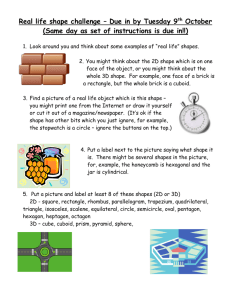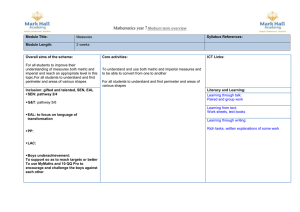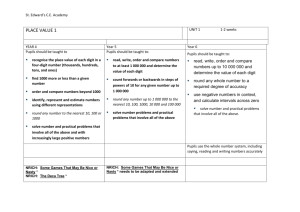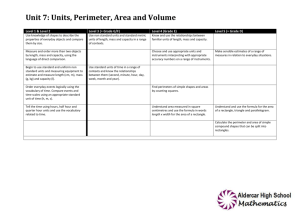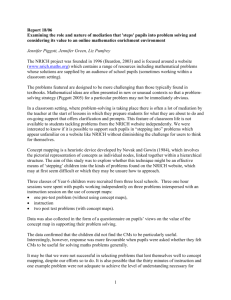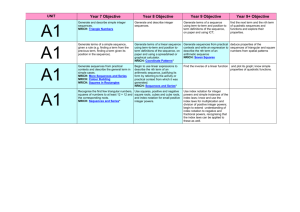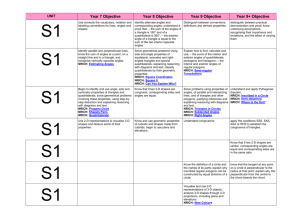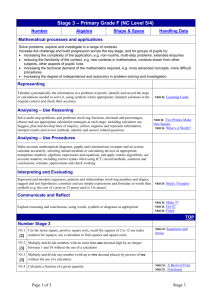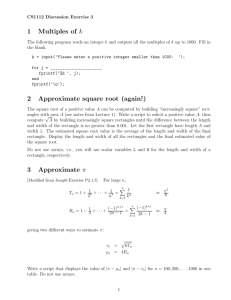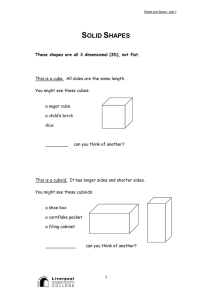Year 8 Support GM2
advertisement
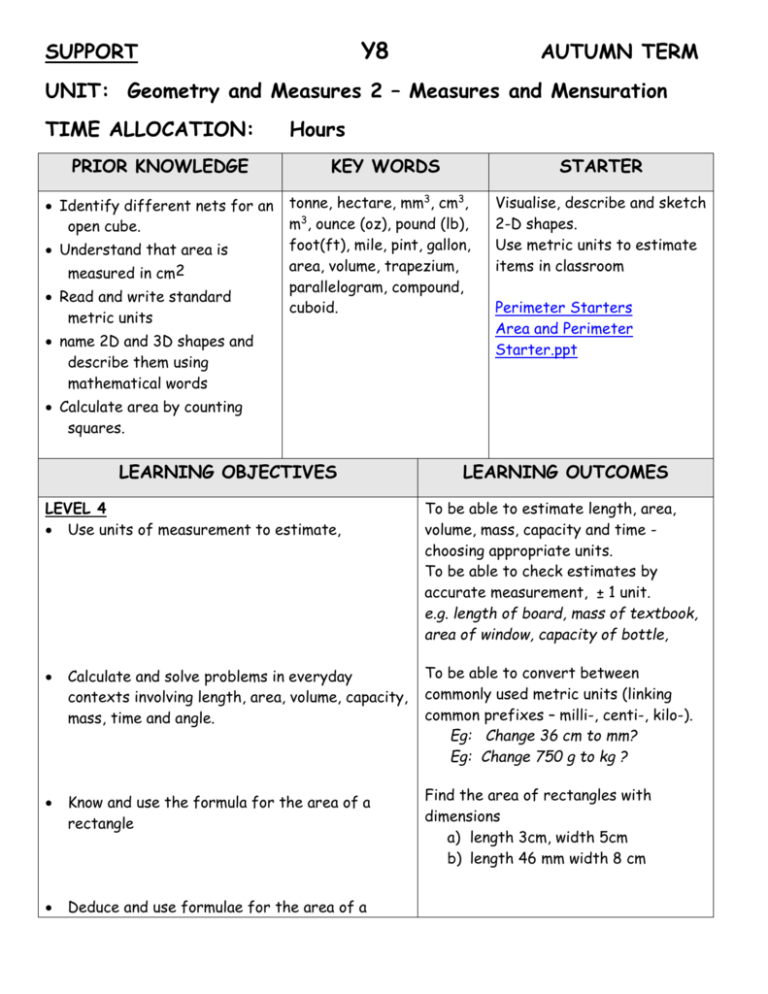
Y8 SUPPORT AUTUMN TERM UNIT: Geometry and Measures 2 – Measures and Mensuration TIME ALLOCATION: PRIOR KNOWLEDGE Identify different nets for an open cube. Understand that area is measured in cm2 Read and write standard metric units Hours KEY WORDS STARTER tonne, hectare, mm3, cm3, m3, ounce (oz), pound (lb), foot(ft), mile, pint, gallon, area, volume, trapezium, parallelogram, compound, cuboid. name 2D and 3D shapes and describe them using mathematical words Visualise, describe and sketch 2-D shapes. Use metric units to estimate items in classroom Perimeter Starters Area and Perimeter Starter.ppt Calculate area by counting squares. LEARNING OBJECTIVES LEVEL 4 Use units of measurement to estimate, LEARNING OUTCOMES To be able to estimate length, area, volume, mass, capacity and time choosing appropriate units. To be able to check estimates by accurate measurement, ± 1 unit. e.g. length of board, mass of textbook, area of window, capacity of bottle, Calculate and solve problems in everyday contexts involving length, area, volume, capacity, mass, time and angle. To be able to convert between commonly used metric units (linking common prefixes – milli-, centi-, kilo-). Eg: Change 36 cm to mm? Eg: Change 750 g to kg ? Know and use the formula for the area of a rectangle Find the area of rectangles with dimensions a) length 3cm, width 5cm b) length 46 mm width 8 cm Deduce and use formulae for the area of a triangle, LEVEL 5 Deduce and use formulae for the area of a parallelogram and trapezium; Calculate areas of compound shapes made from rectangles and triangles. Know & use the formula for the volume of a cuboid; Calculate volumes & surface areas of cuboids and shapes made from cuboids. Investigate in a range of contexts: measures. To be able to deduce and use formula for area of a triangle from a rectangle. To be able to deduce and use formula for area of a parallelogram from a rectangle. Suppose the cuboid is l units long, w units wide and h units high. Then: area of base = lw square units volume = area of base × number of layers = lwh cubic units Find the volume and surface area of cubes and cuboids by taking suitable measurements. Unfold packets in the shape of cuboids and other 3-D shape to form a net. Relate the surface area to the shape of the net. Estimate the surface area of everyday objects. For example Estimate the surface area of a house brick, a large cereal packet, a matchbox… Check estimates by measurement and calculation. ACTIVITIES Cut-and-stick practical – show that area is equivalent to half rectangle area with same B and H. Cut-and-stick practical - show that area is equivalent to rectangle area with same Base & Height. Pin boards to investigate areas of triangles. ICT RESOURCES www.mymaths.co.uk Cubes (multilink/wooden) Area and perimeter section Cuboid boxes Volume section Capacity (Puzzle) Parts of Circles Waldomaths Vanishing Square.ppt Area Dominoes.doc Compound AreaLoop.doc Volume of 24.ppt Measure Millionaire.ppt Measure Order Cards.doc Measure Conversion Bubbles.doc All in a Jumble (NRich) On the Edge (NRich) Fence It (NRich) Hidden Dimensions (NRich) Warmsnug Double Glazing (NRich) Cuboids (NRich) Isosceles Triangles (NRich) Pick's Theorem (NRich) Painted Cube (NRich) Cuboid Challenge (NRich) Sending a Parcel (NRich) Area of rectangle and triangle Area of compound shapes Volume and surface area FUNCTIONAL SKILLS and MPA OPPORTUNITIES Investigate S.A. of all cuboids with volume 48cm³. Form a compound shape by pushing together two rectangles. Compare the areas and perimeters of the rectangles with those of the compound shape. What has changed and why? What happens if you join the rectangles in a different way? Why? Rich Learning task – Dotty polygons (links to unit Algebra 1, Sequences), Dotty polygons teacher’s notes PLENARIES AND KEY QUESTIONS Show me something that has an area of approximately 100 cm². What did you use to help you? If the area of a rectangle is 32 cm², what are the lengths of the sides? Are there other possible answers? How did you work that out? Tim says a square with sides of 8 cm has an area of 32 cm². Do you agree with him? Why? Why is it a good idea to split this shape into rectangles to find the area? How do you go about calculating the dimensions of the rectangles in the compound shape? Can you make up a practical problem that requires use of square metres? Estimate the answer to your problem. Explain how you convert metres to centimetres. How do you change grams into kilograms, millilitres into litres, kilometres into metres, etc.?
